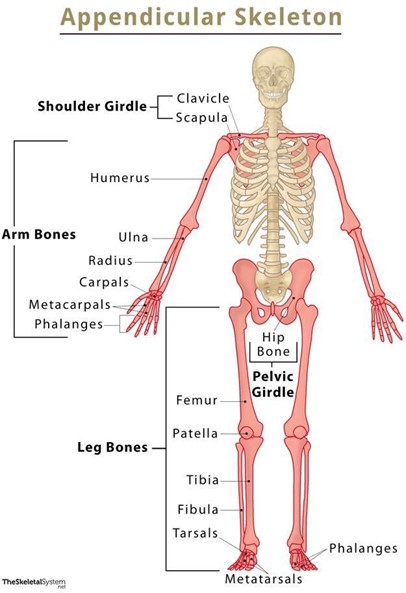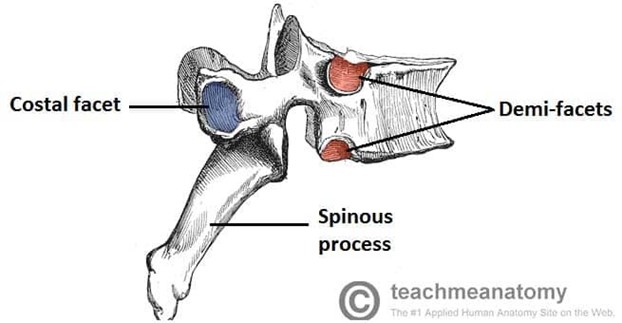Which of the following is not a part of the appendicular skeleton?
Clavicle.
Rib.
Femur.
Scaphoid.
The Correct Answer is B
The rib is a part of the axial skeleton, not the appendicular skeleton.
The axial skeleton

Choice A is incorrect because the clavicle is a part of the pectoral girdle, which connects the upper limbs to the axial skeleton.
Choice C is incorrect because the femur is a part of the lower limb, which is supported by the pelvic girdle.
Choice D is incorrect because the scaphoid is a part of the carpals, which are bones of the wrist in the upper limb.
Nursing Test Bank
Naxlex Comprehensive Predictor Exams
Related Questions
Correct Answer is ["Flexion of the hip joint"]
Explanation
Hip flexion refers to the movement of the thigh bone (femur) towards the front of the body, bringing the knee closer to the chest.
This movement is achieved by the contraction of muscles in the front of the hip, including the iliopsoas and rectus femoris muscles.
The joint involved in hip flexion is the hip joint, which is a ball-and-socket joint formed by the articulation between the head of the femur and the acetabulum of the pelvis.
This joint allows for a range of movements, including:
1. Hip extension: This refers to the movement of the thigh bone backwards, away from the front of the body, which is achieved by the contraction of muscles in the back of the hip, including the gluteus maximus and hamstrings.
2. Hip abduction: This refers to the movement of the thigh bone away from the midline of the body, towards the side, which is achieved by the contraction of muscles on the outside of the hip, including the gluteus medius and tensor fasciae latae.
3. Hip adduction: This refers to the movement of the thigh bone towards the midline of the body, which is achieved by the contraction of muscles on the inside of the hip, including the adductor muscles.
4. Hip external rotation: This refers to the movement of the thigh bone away from the midline of the body and outwards, which is achieved by the contraction of muscles on the back of the hip, including the piriformis and gemellus muscles.
5. Hip internal rotation: This refers to the movement of the thigh bone towards the midline of the body and inwards, which is achieved by the contraction of muscles on the inside of the hip, including the gluteus minimus and tensor fasciae latae.
All of these movements of the hip joint are important for walking, running, and other activities that require the use of the lower limbs.
Additionally, a lack of hip flexibility or strength can lead to compensatory movements in other parts of the body, which can result in pain or injury over time.
Correct Answer is ["thoracic costal facet"]
Explanation

The thoracic costal facet is a feature found on the thoracic vertebrae, which are the bones that make up the mid-back region of the spine.
The costal facet is a small, flat surface located on the transverse process of the thoracic vertebrae, where it articulates with the head of the rib.
There are two costal facets on each thoracic vertebra, one on the transverse process and one on the body of the vertebra.
The costal facet is an important anatomical feature as it provides stability and support to the rib cage and facilitates the movements of the thoracic spine during respiration and other activities.
Injuries to the costal facet can result in rib fractures or dislocations, which can be very painful and require medical intervention.
Whether you are a student looking to ace your exams or a practicing nurse seeking to enhance your expertise , our nursing education contents will empower you with the confidence and competence to make a difference in the lives of patients and become a respected leader in the healthcare field.
Visit Naxlex, invest in your future and unlock endless possibilities with our unparalleled nursing education contents today
Report Wrong Answer on the Current Question
Do you disagree with the answer? If yes, what is your expected answer? Explain.
Kindly be descriptive with the issue you are facing.
